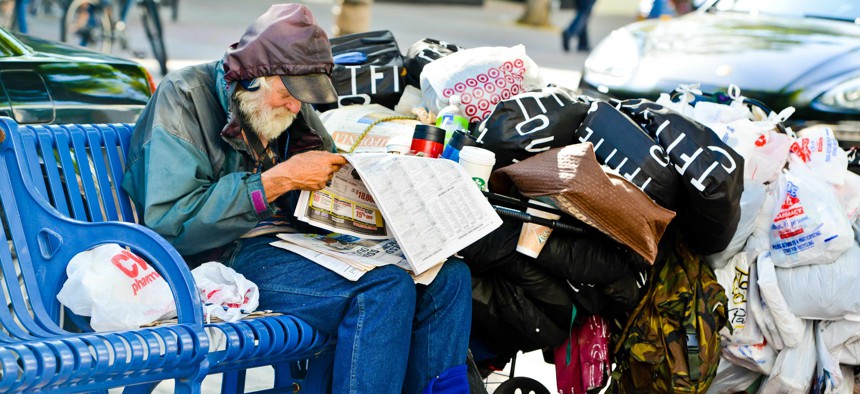National Homelessness Estimate Grows for Fourth Consecutive Year

ISTOCK.COM/ANOUCHKA
The number of people who are homeless and without shelter has been on the rise.
On a single night in January last year, roughly 580,000 people were experiencing homelessness in the United States, nearly 4 in 10 in unsheltered locations, such as the street or abandoned buildings, according to estimates in a new report.
This marks the fourth year in a row that the homelessness estimate has grown, the study shows. The findings appear in part one of HUD’s Annual Homeless Assessment Report to Congress. The report provides point-in-time estimates, based on one-night counts conducted during the last 10 days of January each year.
In 2016, the annual point-in-time count found that an estimated 549,928 people were homeless in the U.S. That number has climbed each year since then. The number of unsheltered people also increased steadily over that time to 226,080 in 2020, from 176,357 in 2016. Meanwhile, the number of sheltered people who are homeless fell to 354,386 from 373,571.
In January of 2020, the largest share of people estimated to be experiencing homelessness was in California (28%), followed by New York (16%), Florida (5%) and Texas (5%). While Florida and Texas, two of the nation’s most-populous states, had large numbers of homeless people, their homelessness rates were lower than the national average for states of 18 people per 10,000.
The estimates show western states with some of the highest percentages of people experiencing homelessness in unsheltered locations. California had 70% of its homeless population, or about 113,660 people staying in unsheltered sites, while Oregon, Nevada, Hawaii and Arizona also had majorities in these types of locations.
Although New York had the highest rate of homelessness, at 47 people for every 10,000 in the state, it was the only state to shelter at least 95% of its homeless population.
Between 2019 and 2020, New York also ranked in the top three states with the largest decreases in the number of homeless people (a decline of 820). The other two states that saw the largest declines included Oregon (1,221 fewer people) and Florida (841 fewer).
The latest estimates are for a year when the nation saw large segments of the economy shaken badly by the Covid-19 pandemic, leaving millions of Americans out of work or struggling financially. Those strains came on top of already difficult problems many states are facing with homelessness, particularly West Coast states.
A forthcoming second part of the report will provide a fuller picture of how the pandemic has affected the shelter system, according to Meghan Henry, a project director with Abt Associates, which produced the report. “These point-in-time data provide critical information on pre-Covid trends, most notably on the recent increase in the unsheltered population,” Henry added.
More information about the findings can be found here.
Brent Woodie is an associate editor at Route Fifty.
NEXT STORY: How One State Will Work With the Feds On a Major Tech Overhaul





